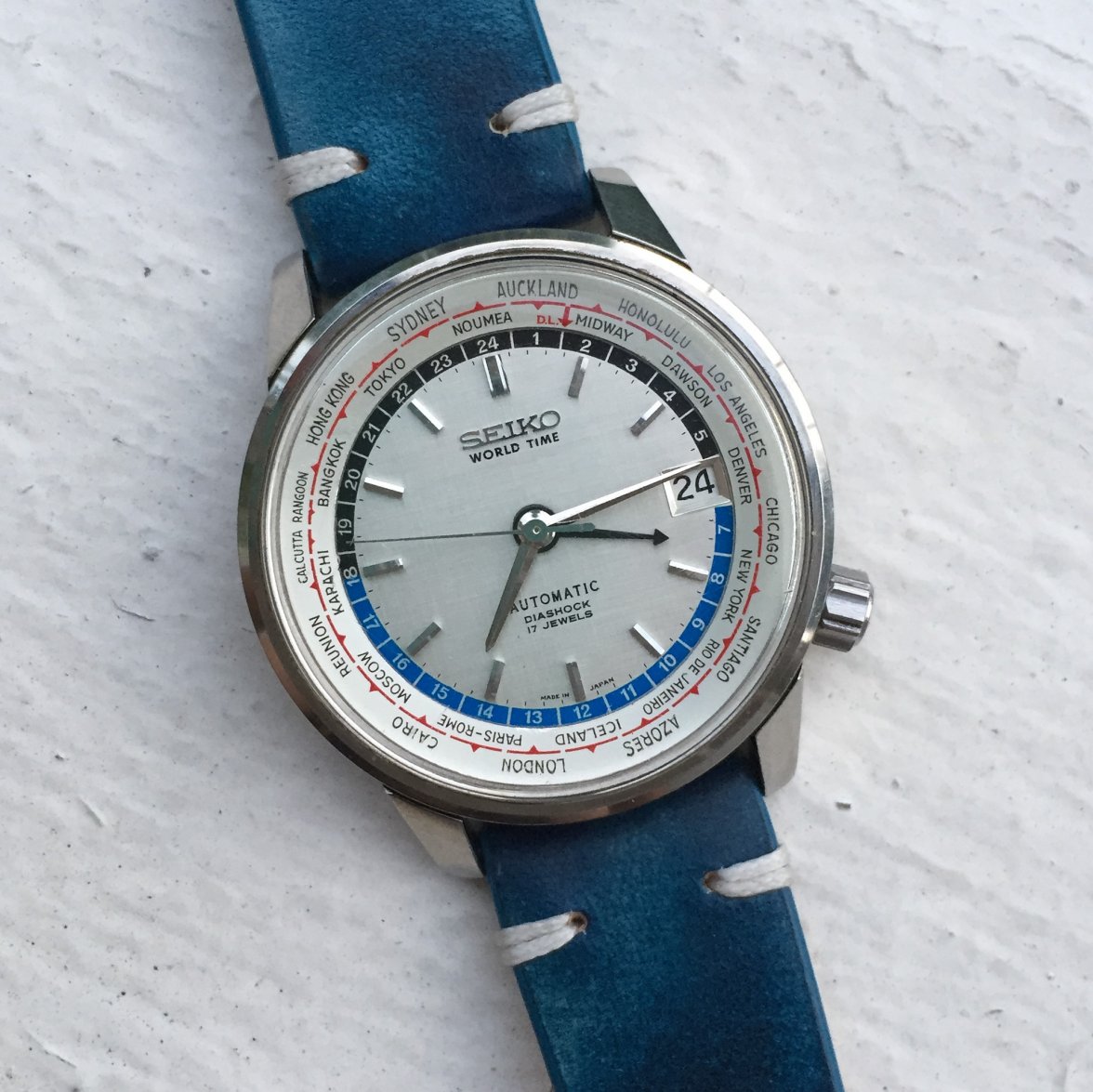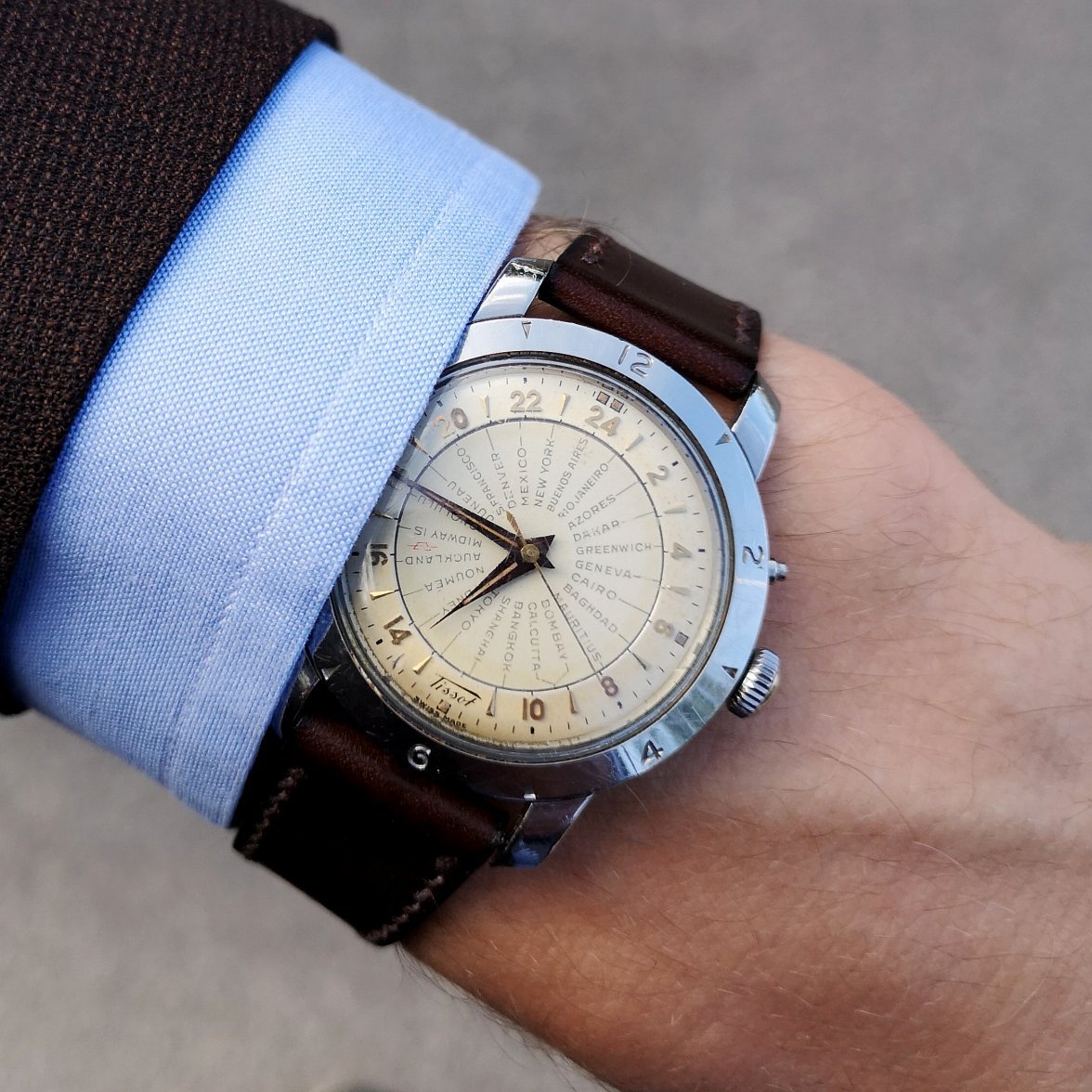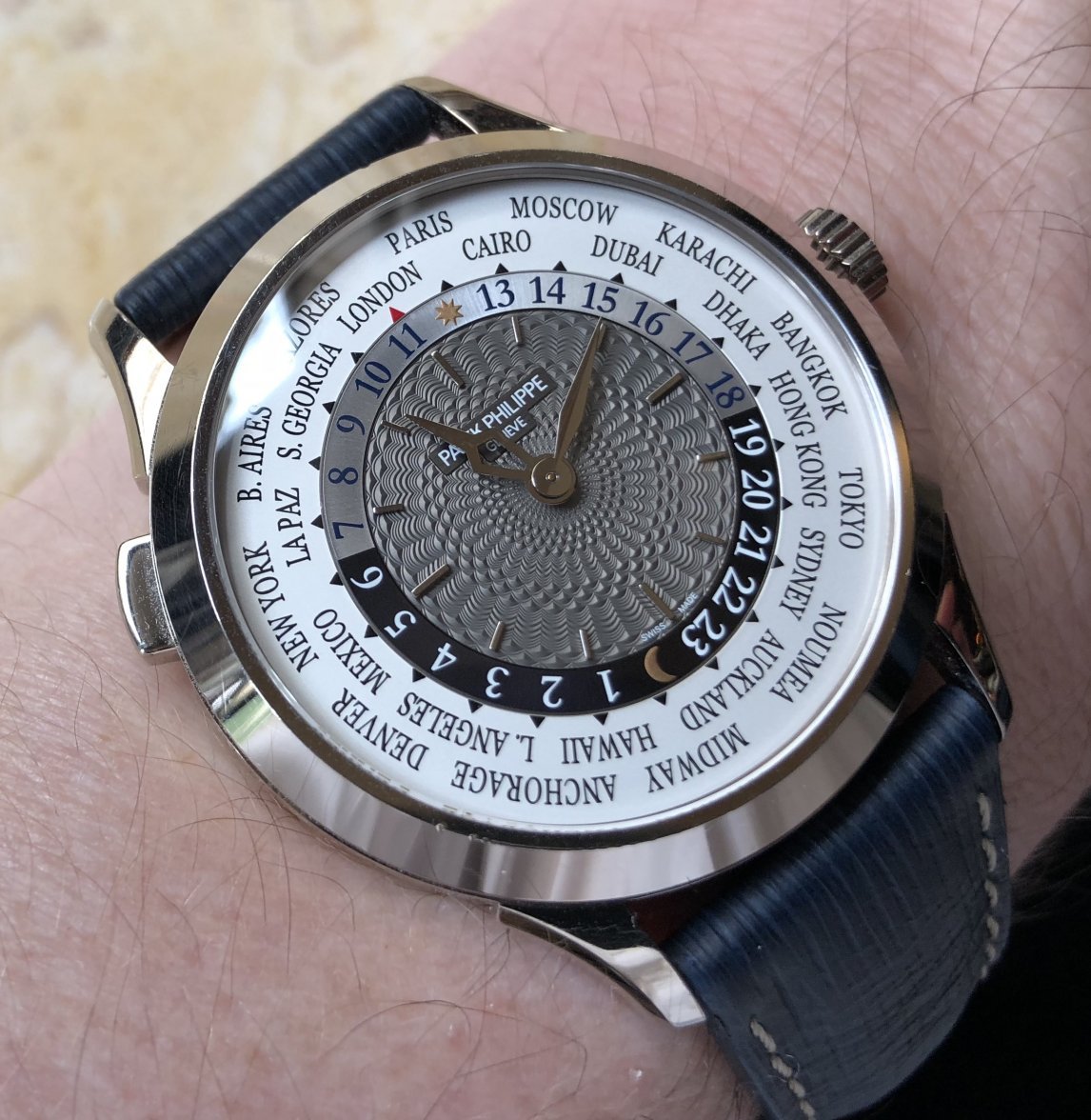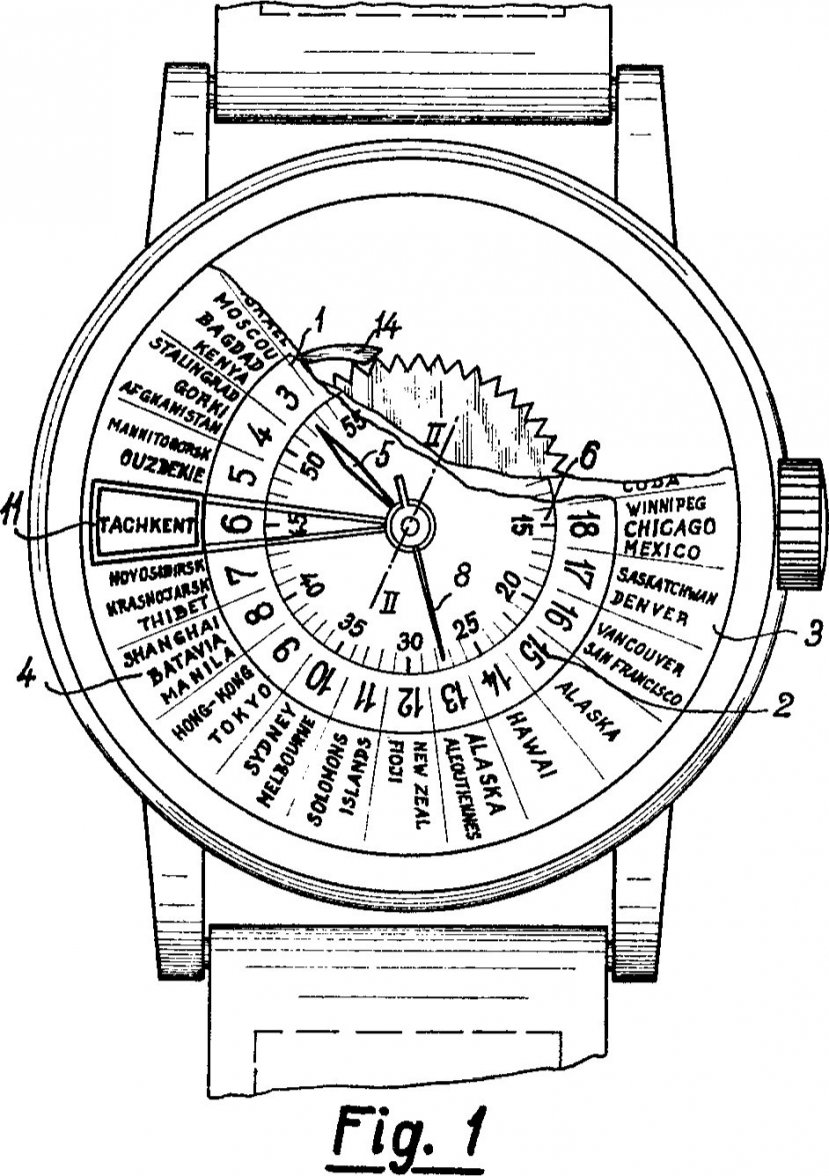TDBK
·I travel frequently and have been considering buying a GMT or a world timer watch. However, I had a sneaking suspicion of world timers: how do those pretty rings of city names deal with daylight savings times and other switches? Is this just a detail or is it frequently incorrect? With my OCD focus on detail I would not be able to ignore the fact that cities are off by an hour, so I wanted to know how big a problem it would be.
After a little bit of programming, I can tell you: it's a mess. Not only are many of the cities wrong for much of the year, but timezone rules change often enough that even if you could come up with a way to reflect the worldwide rules at any moment, it would be out of date long before you handed it down to your kids, and possibly before your first service.
I looked at two watches, selected without a lot of care: the NOMOS Zürich World Time and the Omega Seamaster Aqua Terra Worldtimer.
For each of the watches, I transcribed the 24 locations they used for the timezones around the globe and mapped them to the timezone rules for that locale. Then I calculated the local time in those cities at midnight London time and checked to see if the local time aligned with the offset from London on the watch face. I checked a number of dates in 2018 in all four seasons. In the spring or fall, it's not so bad, but there are still errors:
March 10, 2018 at midnight London time, either of these watches would say it's noon in Auckland, but it's actually 1pm there, as New Zealand observes daylight saving time until April 1. But a month later on April 10, Britain has begun DST and now it's off by an hour in the other direction: at midnight London time, the watch will say it's noon in Auckland, but now it's 11am there. On March 10, 2018, the NOMOS would be off by an hour in Sydney, Auckland, and Santiago, and the Omega would be off by an hour in just Sydney and Auckland.
However, when one gets into summer or winter months, things get a lot more ugly. On today, June 10, 2018, each of these watches is off on 15 of their 24 time zones: more than half! If you own one of these watches hoping it will tell you the time in other cities, and set it based on a continental US or Western Europe city, it will be off by an hour more often than it will be right. Specifically, they'll each show a time an hour later than the actual time in Moscow, Dubai, Karachi, Dhaka, Bangkok, Hong Kong/Shanghai, Tokyo, Sydney, Noumea, Auckland, Pago Pago/Samoa, Honolulu, Santiago/Puerto Rico, Sao Paulo, and DeNoronha/South Georgia.
This doesn't seem solvable: the idea of 24 painted city names actually reflecting local times around the globe is romantic but unrealistic; in practice, it's useful for a rough approximation (within an hour or at most two) and nothing more.
After a little bit of programming, I can tell you: it's a mess. Not only are many of the cities wrong for much of the year, but timezone rules change often enough that even if you could come up with a way to reflect the worldwide rules at any moment, it would be out of date long before you handed it down to your kids, and possibly before your first service.
I looked at two watches, selected without a lot of care: the NOMOS Zürich World Time and the Omega Seamaster Aqua Terra Worldtimer.
For each of the watches, I transcribed the 24 locations they used for the timezones around the globe and mapped them to the timezone rules for that locale. Then I calculated the local time in those cities at midnight London time and checked to see if the local time aligned with the offset from London on the watch face. I checked a number of dates in 2018 in all four seasons. In the spring or fall, it's not so bad, but there are still errors:
March 10, 2018 at midnight London time, either of these watches would say it's noon in Auckland, but it's actually 1pm there, as New Zealand observes daylight saving time until April 1. But a month later on April 10, Britain has begun DST and now it's off by an hour in the other direction: at midnight London time, the watch will say it's noon in Auckland, but now it's 11am there. On March 10, 2018, the NOMOS would be off by an hour in Sydney, Auckland, and Santiago, and the Omega would be off by an hour in just Sydney and Auckland.
However, when one gets into summer or winter months, things get a lot more ugly. On today, June 10, 2018, each of these watches is off on 15 of their 24 time zones: more than half! If you own one of these watches hoping it will tell you the time in other cities, and set it based on a continental US or Western Europe city, it will be off by an hour more often than it will be right. Specifically, they'll each show a time an hour later than the actual time in Moscow, Dubai, Karachi, Dhaka, Bangkok, Hong Kong/Shanghai, Tokyo, Sydney, Noumea, Auckland, Pago Pago/Samoa, Honolulu, Santiago/Puerto Rico, Sao Paulo, and DeNoronha/South Georgia.
This doesn't seem solvable: the idea of 24 painted city names actually reflecting local times around the globe is romantic but unrealistic; in practice, it's useful for a rough approximation (within an hour or at most two) and nothing more.






